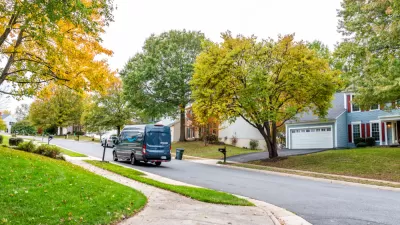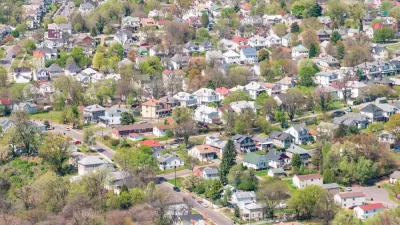California State Senator has released draft legislation to follow up on the previous SB 50, which in turn followed up on SB 827. The new bill, SB 902, promises a "light touch."

California State Senator Scott Wiener "is back with a new housing bill aimed at alleviating the state's housing shortage," reports Erin Baldesarri.
The Democratic San Francisco state senator introduced the bill, called SB 902, on Monday. It’s a follow-up to SB 50, a controversial proposal that would have allowed for taller apartment buildings in urban areas near transit and job centers, along with fourplexes throughout the state. That bill died early this year.
Wiener’s new bill would allow duplexes in cities with fewer than 10,000 residents, triplexes in cities with between 10,000 to 50,000 residents and fourplexes in cities with more than 50,000. Current building heights imposed by cities would stay the same under the bill, along with other local building rules, such as design guidelines.
According to Baldessari's explanation, SB 902 is designed to avoid concerns about SB 50 as a "one-size-fits-all" approach. Wiener is quoted in the article saying that buildings allowed under SB 902 would be much smaller than buildings required under SB 902.
Still, SB 902 would alter zoning codes around the state, as noted in a separate article on the news by John Meyers: "While the bill would not change local control over the size and shape of housing built in those neighborhoods, it would supersede local zoning rules that have limited density."
"The new legislation, Senate Bill 902, also seeks to provide incentives for larger cities that are willing to allow 10-unit projects. After a vote by local officials, those zoning efforts would be exempt from additional review under the California Environmental Quality Act, or CEQA," adds Myers. "Population numbers compiled by the state Department of Finance show that under the density standards in SB 902, more than three-quarters of all California cities would have to allow triplex or fourplex projects on existing residential land."
Another article by Matt Levin describes SB 902 as a "density vitamin" compared to SB 50's "urban growth hormone."
FULL STORY: Sen. Wiener Wants to Abolish Single-Family-Only Neighborhoods in California

Study: Maui’s Plan to Convert Vacation Rentals to Long-Term Housing Could Cause Nearly $1 Billion Economic Loss
The plan would reduce visitor accommodation by 25,% resulting in 1,900 jobs lost.

Alabama: Trump Terminates Settlements for Black Communities Harmed By Raw Sewage
Trump deemed the landmark civil rights agreement “illegal DEI and environmental justice policy.”

North Texas Transit Leaders Tout Benefits of TOD for Growing Region
At a summit focused on transit-oriented development, policymakers discussed how North Texas’ expanded light rail system can serve as a tool for economic growth.

Nevada Bills Aim to Establish Home Insurance Assurance Amidst Wildfire Risk
Republican sponsor hopes the FAIR plan would be “a true market of last resort.”

Virginia Law Allows Judges to Mandate Speed Limiters
The law could set a new precedent for speed limiting tech on U.S. vehicles.

Comment: EPA Cuts will Send Atlanta Back to Eye-burning Ozone, Lung-damaging Smog, and Raw Sewage in the Chattahoochee River
A veteran political journalist takes stock of the hard-earned ground Georgia stands to lose with slashed environmental protection.
Urban Design for Planners 1: Software Tools
This six-course series explores essential urban design concepts using open source software and equips planners with the tools they need to participate fully in the urban design process.
Planning for Universal Design
Learn the tools for implementing Universal Design in planning regulations.
City of Santa Clarita
Ascent Environmental
Institute for Housing and Urban Development Studies (IHS)
City of Grandview
Harvard GSD Executive Education
Toledo-Lucas County Plan Commissions
Salt Lake City
NYU Wagner Graduate School of Public Service





























